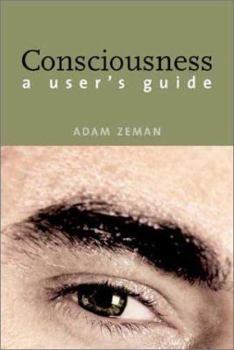Consciousness: A User's Guide
Select Format
Select Condition 
Book Overview
A fascinating exploration of the nature of consciousness This engaging and readable book provides an introduction to consciousness that does justice both to the science and to the philosophy of... This description may be from another edition of this product.
Format:Hardcover
Language:English
ISBN:0300092806
ISBN13:9780300092806
Release Date:February 2003
Publisher:Yale University Press
Length:416 Pages
Weight:1.45 lbs.
Dimensions:1.4" x 6.5" x 9.4"
Customer Reviews
2 ratings
As I said in the New York Times book review...
Published by Thriftbooks.com User , 21 years ago
An articulate, liberally educated neurologist at the University of Edinburgh, Adam Zeman has written columns for The Times of London and is an occasional commentator for the BBC and the co-author of a book on ethical problems in neurology. His new book covers many aspects of consciousness for general readers. His treatment of the disorders of knowledge is superb. If you were intrigued with ''The Man Who Mistook His Wife for a Hat,'' you'll appreciate the buildup to what Oliver Sacks described in that work. Zeman's much more subtle examples give you some appreciation for how seeing and describing can become disconnected from recognition and other forms of knowledge. There have been a number of fine books on consciousness in the last dozen years, starting with Daniel Dennett's ''Consciousness Explained,'' which was written from the standpoint of a philosopher well versed in cognitive sciences and evolution. I am also fond of ''The Feeling of What Happens,'' by Antonio Damasio. Like Zeman, Damasio is a neurologist steeped in both literature and philosophy. But Zeman's ''Consciousness'' is the broader book, the one that could be used in an undergraduate humanities or psychology course to fill in the neuroscience background for readers coming to it for the first time. Indeed, Zeman first introduces his subject and then spends a hundred pages on neurobiology and human evolution before returning to consciousness. Readers impatient for consciousness per se can skim these chapters without losing the thread, though they are relatively painless introductions to what consciousness is built atop of. p.24(28 September 2003).
Pretty good,
Published by Thriftbooks.com User , 21 years ago
THis is a quite nice book, an introductory book, quite up to date and very refreshingly clinically oriented. Zeeman is a neurologist and he mostly stays in clear waters. His introduction is a quite interesting analysis of the definitions and concepts of consicousness, he traces uses and origins of the words themselves: consicousness, awareness, self-consicousness etc., are all discussed. THis is new, as only some philosophers had concerned themselves with these issues. Then comes the review of litterature, the core of the book. This is the most valuable part not because of its originality but because of the information within it. Zeeman explains the neural systems of wakefulness and alertness, that is, the acending reticular activating system, as well as the neuroelectrophysiology of the thalamocortical system. Zeeman gives historical points and is quite thurough. Right next he examines brain disturbances that alter this system: coma, seizures, vegetative states, etc..topping with what these contribute to the search for the former. He does the same with the neural system of vision, from retina to v1 and extrastriate cortices. He also examines disturbances of vision, achromatognosia, prosopagnosia, agnosia, blindness, blinsight. This method, of investigating the science of the phenomenon, and then the brain damage that alters it, gives a fuller view of the phenomenon and its neural basis, and Zeeman does a good job.Up untill now everything is good and ready, only with the probable objection that consicousness is not ust wakefulness with sensory content, as Zeeman seems to mantain. But Zeeman also writes chapters on the evolution of consicousness, and seems to give a rather naive argument for why it must be casual. To be sure, if it evolves, it must not be epiphenomenal, but not much follows from this. He also fails to give an adequate story of how consicousness gradually appeared, but only claims it must have. His views on animal consicousness are sensical enough. His chapter on scientific theories of consicousness is quite weak, both becuase he only passingly explains the theories and because he seems to misundertstand some and give some poor objections. He discusess Edelman, Crick, Seki, Baars,Damasio,E.r jOhn, Llinas among a few others, and could have given much more detail. He readily falls to explanatory gap concerns, and cannott do a good critical or explanatory job. He does see through some basic agreements, like the idea of distribuited but integrated neural assemblies in the thalamocortical system. His chapter on philosophy, freewill, and AI is also quite bad. He fails to really analyse the thought experiments, of colorblind mary, zombies, absent andf inverted qualia. Zeeman cannot see how Mary by gaining physical knowledge can come to have experience, because he seems not to be aware of the litterature that argues for such physical knowledge, like Van Gulicks or John Perrys work. HIs critiques of Dennett or Searle are not profound, but o






